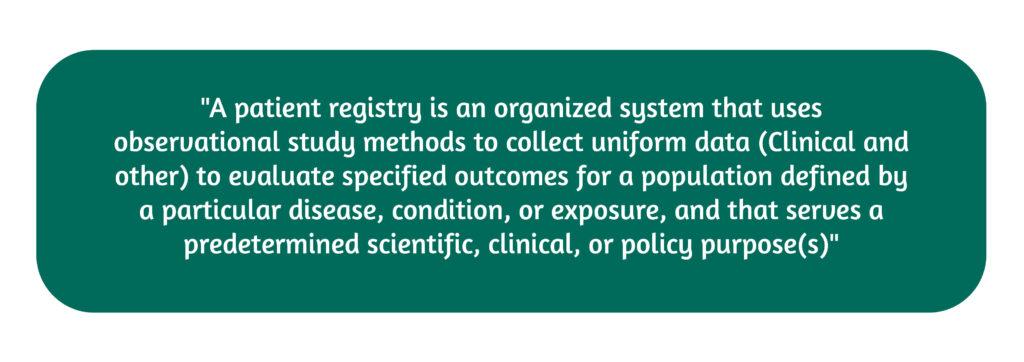Authors: Irina Vlad, Silvina Ilut
Keywords: TBI, TBI registry, medical registry, CENTER-TBI, InTBIR, registry challenges
Focus Keyword: Medical registries
“Traumatic Brain Injury Registries? Yes!” is a continuation of the factsheets “Why is traumatic brain injury considered a global burden?” and “What happens after a TBI?”.
What is a registry?
A registry refers to a collection of official records relating to a thing or place where they are being kept [1]. 1856 is the year of the first medical registry, namely Norway’s National Leprosy registry [2].

Why are medical registries being used?
Generally, medical registries are used in order to achieve different goals. If used correctly, they represent a means to create a database with different pre-established data sets for various public health objectives. These registries are widely used in various fields of medicine, providing information about patients and different diseases.
Registries content:
- the epidemiology of various diseases
- monitoring the progression of several diseases
- treatments
- types of care
- helping in identifying new clinical information
- paraclinical investigation [Figure 2].

Furthermore, ensuring surveillance of these patients can identify several needs in healthcare, an essential step for policy development and patient care. Today, the data collected in registries can be associated with biobanks, thus allowing their use in randomized controlled clinical trials. Furthermore, stakeholders can include different technologies and medications in registries to assess effectiveness and safety [3].
An essential aspect of medical registries is the source of the collected data. The majority of existing databases gather data from single institutions, while registries usually cover several.
Patient registries are concentrated on people with a common disease, condition, vulnerability, or exposure, evaluating them long-term [4].
What is a patient registry?
Gliklich RE et al. defined a patient registry as follows:
“A patient registry is an organized system that uses observational study methods to collect uniform data (Clinical and other) to evaluate specified outcomes for a population defined by a particular disease, condition, or exposure, and that serves a predetermined scientific, clinical, or policy purpose(s)” [5].

What is the importance of Traumatic Brain Injury registries?
Research on TBI has been considered, for a long time, insufficient due to minor and heterogeneous studies with inconsistent results. However, the significant global burden of TBI, the differences in existing research and the availability of good-quality data between high-income countries (HIC) and low-middle-income countries (LMIC) has underlined the need for global research and the development of further strategies to address the issue. LMICs present a lack of data, despite a higher incidence of TBI and a higher disability rate. Therefore, the global need for high-quality research, with clearly defined methodology and quality results has increased international collaboration.
Consequently, databases and registries were created on local, national, and international levels. [6].
TBI registries focus on obtaining data from a population with a common diagnosis of TBI, including epidemiological data, information on TBI mechanisms, risk factors, level of care, treatments and outcomes, organizational and cost-effectiveness aspects, and many more [7].
What are the existing international TBI registries?
International initiative for TBI research (InTBIR), with support from the European Commission, the National Institutes of Health, the Canadian Institutes of Health Research, and other stakeholders, was founded in 2011. This represents one of the most significant projects that aim to ensure collaboration on the international level, obtaining standardized, harmonized results based on a common data set shared among countries and researchers. The InTBIR studies comprise data from 350 centres with over 50.000 TBI patients, showcasing the utter importance of global collaboration. Global common efforts should address the differences between resourceful countries and those with limited resources with variability in acute care and rehabilitation and the limited use of current guidelines (developed, generally, by HIC) consequently covering and considering the resources and possibilities of care.
Therefore, some of the existing guidelines might not be completely useful in countries with limited resources [8]. Therefore, the use of InTBIR may have a real impact on TBI globally by including various countries, thus addressing TBI in different clinical settings, with various particularities, including access to limited resources that influence the level of healthcare consequently, the patient’s outcomes [6].
Europe contributes to InTBIR with two TBI projects, namely:
- CENTER-TBI (Collaborative European Neurotrauma Effectiveness Research)
- CREACTIVE (Collaborative Research on Acute Traumatic brain injury in intensive care medicine in Europe) [6].
While CENTER-TBI concentrates on the comparative analysis of the gathered data regarding the effectiveness and the improvement of knowledge about TBI and precision medicine, CREACTIVE concentrates on the analysis of epidemiology, treatment, and prognosis of moderate and severe TBI patients originating from 7 European countries.
What are the challenges of Traumatic Brain Injury Registries?
The development and maintenance of a registry require substantial effort. Developing a registry implies a well-organized team that has to establish several aspects of the different phases of the process, as showcased in Figure 4.
First, the purpose of the registry has to be clearly stated. Furthermore, the data set and the methodology of the gathering process must be established while considering the available resources, infrastructure, the interest of different stakeholders, financial support, and the legal framework [3].

Moreover, international registries face challenges with the coordination between centers and countries, the need to establish a harmonized database with shareable and feasible protocols and with the distribution of data. For this purpose, several institutions and organizations have had specialized task forces and guidelines. Moreover, the European Commission offers support for different registries, for example, in collaboration with the European Medicines Agency (EMA), to further collaboration with different stakeholders ranging from physicians to patients, institutions, and policy regulators involved in healthcare [4]. The PARENT framework provides additional help for the development and maintenance of patient registries by covering methodological aspects, ranging from organization, strategies for development, existing tools for the involved stakeholders on multiple levels as well as information about existing European registries, standardization, and operability of the registries [9].
Regardless of the major funding received by InTBIR, challenges had to be overcome. These ranged from adapting to the local legislation, including consent, privacy, data sharing, and selecting valuable data and analysis. Additionally, the use of artificial intelligence represents a modern-day opportunity, leading to insightful ideas such as the development and use of an E.U. Health Cloud that would allow meta-analyses of data across the available databases [6].
The use of TBI registries in association with artificial intelligence represents one of today’s ways to ensure global harmonized research regarding TBI [6].
References
- Collins English Dictionary. Copyright © HarperCollins Publishers, Collins Dictionary, https://www.collinsdictionary.com/dictionary/english/registry, accessed on 17.04.2022
- Irgens LM. The origin of registry-based medical research and care. Acta Neurol Scand Suppl. 2012;(195):4-6. DOI: 10.1111/ane.12021.
- Pop B, Fetica B, Blaga ML, et al. The role of medical registries, potential applications and limitations. Med Pharm Rep. 2019;92(1):7-14. doi:10.15386/cjmed-1015
- European Medicines Agency, 2019, Patient registries, accessed on 18.04.2022, https://www.ema.europa.eu/en/human-regulatory/post-authorisation/patient-registries
- Gliklich RE, Dreyer NA. Registries for Evaluating Patient Registries: A User’s Guide: AHRQ publication No. 07-EHC001. Rockville, MD 2007. https://pubmed.ncbi.nlm.nih.gov/24945055/
- Model Systems Knowledge Translation Center (MSKTC), Balance after Traumatic Brain Injury, 2021, Available from: www.msktc.org/tbi/factsheets, accessed on 08.05.2022
- Division of Injury and Disability Outcomes and Programs National Center for Injury Prevention and Control Centers for Disease Control and Prevention U.S. Department of Health and Human Services, 2005, Traumatic Brain Injury in the United States: The Future of Registries and Data Systems, accessed on 18.04.2022, https://www.cdc.gov/traumaticbraininjury/pdf/future_of_registries-a.pdf
- Ahmed Negida, Zoe Teton, Brittany Stedelin, Caleb Nerison, Hieder Al-Shami, Ahmed Hegazy, Ahmed M T Raslan, Determining the global outcomes of traumatic brain injury in low-, middle- and high- income countries: a prospective, global neurosurgery, multicenter cohort study (Global NeuroSurg 1 Study Protocol), Journal of Surgical Protocols and Research Methodologies, Volume 2021, Issue 1, September 2021, snab002, https://doi.org/10.1093/jsprm/snab002
- I Pristas, V Pajic, B Plese, M Brkic, M Milos, M Kostesic, A Vrecko. Introducing tools and actions towards IT-enabled, higher quality patient registries – Framework presentation: PARENT Registry of Registries and Assessment Tool: Ivan Pristas, European Journal of Public Health, 2015, Volume 25, Issue suppl_3, https://doi.org/10.1093/eurpub/ckv169.007




